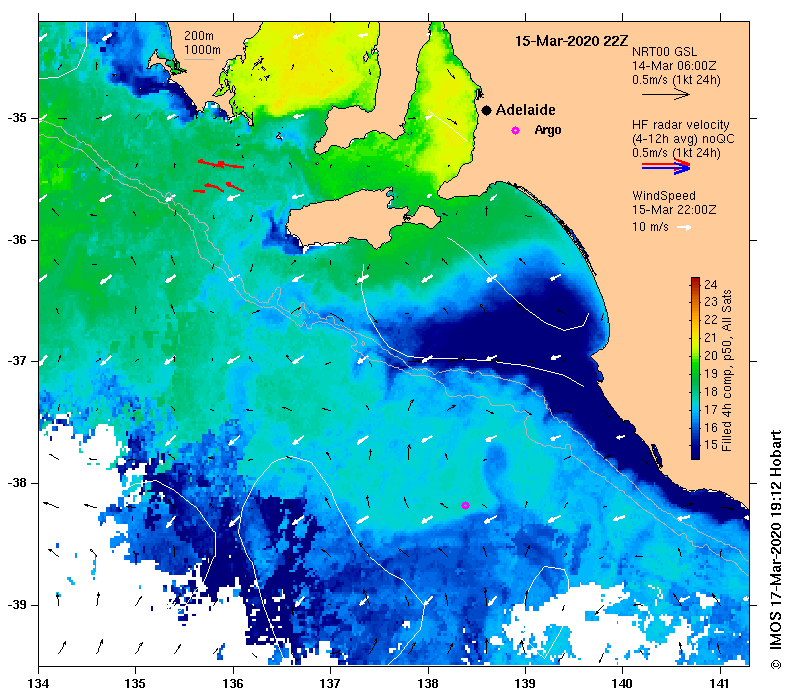Whilst the Bonney coast upwelling season started slowly this summer, it has developed into an extremely strong upwelling event late in the season.
The Bonney coast upwelling season developed slowly this summer with the first signs of cold coastal water appearing in late December but consistent upwelling-favourable winds since early February have resulted in an extremely strong upwelling event late in the season. The peak occurred in mid-March (Figure 1) with the plume of water extending right across the shelf and well into Long Bay to the northwest. The SST anomaly indicates water temperatures were more than 3°C cooler than SSTAARS mean climatology. The two less reliable upwelling regions, off western Kangaroo Island and western Eyre Peninsula, also show significant cold water plumes.
When the cold, nutrient-rich water is brought up to the light, phytoplankton in the water are able to multiply and this productivity can be seen with images of Chlorophyll-a. The complexity of the response is evident in the image from March 11 (Figure 2). The bloom is strong at the edges of the plume while there is almost nothing happening at the centre. This pattern probably reflects the strength of the upwelling event. Water that is upwelled initially (at the outer edge of the plume in this case) will have brought phytoplankton up from the mixed layer (where phytoplankton are often found). Whereas the lack of pigment at the centre of the plume suggests the water has come from well below the mixed layer and it will take a little time for the phytoplankton response to develop in this water. In later images, e.g. March 15, there is a strong chlorophyll-a signal on the Bonney Coast shelf.
The beautiful wave-like features all along the outer edge of the cold water plume (Figures 1&2) are most likely due to the shear between the plume and the water offshore. Despite the cloud, we can occasionally see (in video of the SST) the plume pushing up to the northwest in pulses around March 6-8 and again March 15. Surface velocities (red arrows) from the SA Gulfs radar indicate north-westward velocities of up to 0.4m/s on the shelf. It certainly would have been a good time to have the scheduled Bonney Coast glider deployment, but glider deployments have had to be suspended due to the COVID-19 pandemic.
For more up to date ocean information around Australia visit IMOS OceanCurrent.
